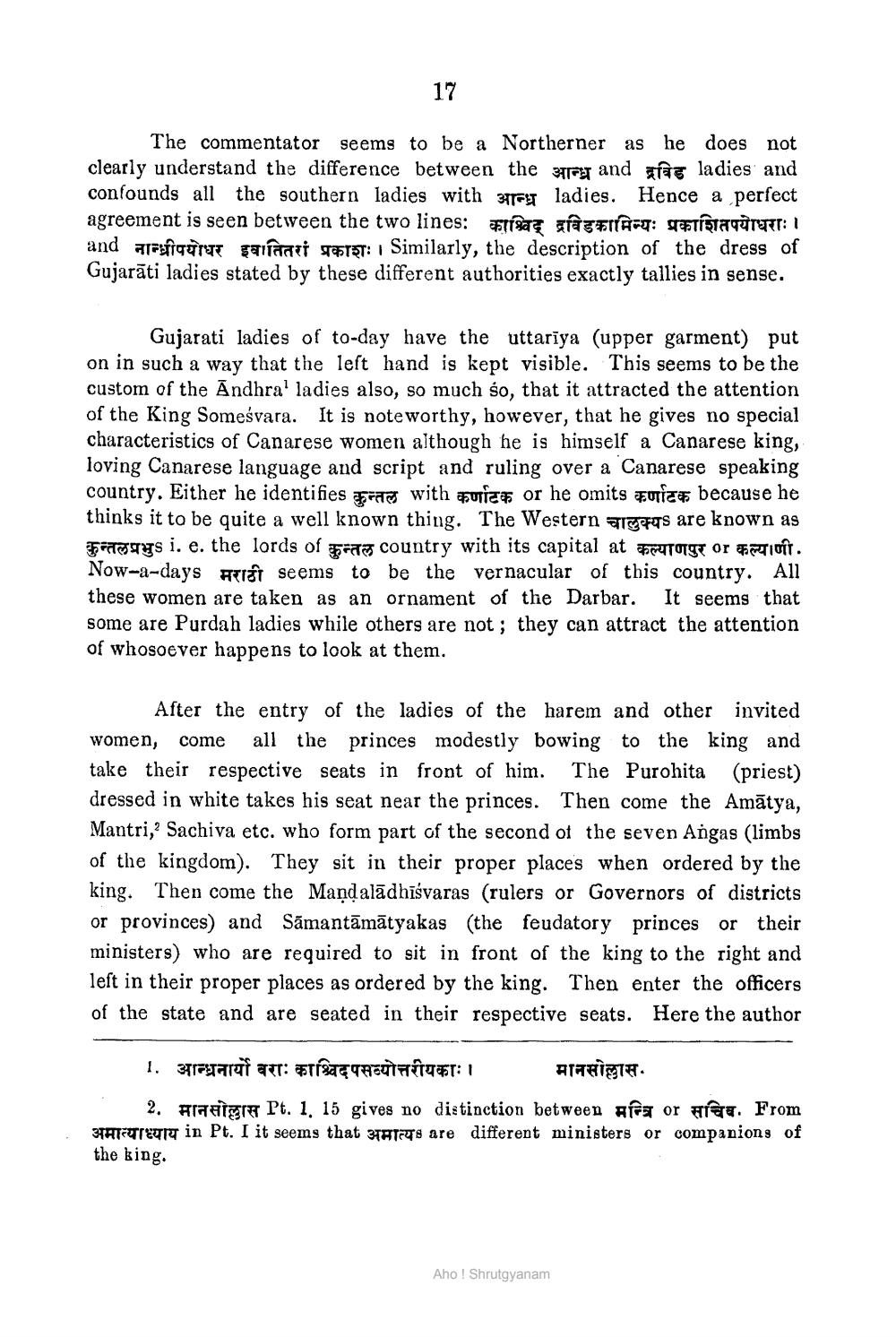________________
17
The commentator seems to be a Northerner as he does not clearly understand the difference between the r and fate ladies and confounds all the southern ladies with 375 g ladies. Hence a perfect agreement is seen between the two lines: Firea afacFIAFT: TEFTISTATUTETTI: and ArtūITT galfaati #IFT: Similarly, the description of the dress of Gujarāti ladies stated by these different authorities exactly tallies in sense.
Gujarati ladies of to-day have the uttarīya (upper garment) put on in such a way that the left hand is kept visible. This seems to be the custom of the Āndhra' ladies also, so much so, that it attracted the attention of the King Someśvara. It is noteworthy, however, that he gives no special characteristics of Canarese women although he is himself a Canarese king, loving Canarese language and script and ruling over a Canarese speaking country. Either he identifies entry with Fuick or he omits OTIC# because he thinks it to be quite a well known thing. The Western ges are known as कुन्तलप्रभुsi. e. the lords of कुन्तल country with its capital at कल्याणपुर or कल्याणी. Now-a-days ATI seems to be the vernacular of this country. All these women are taken as an ornament of the Darbar. It seems that some are Purdah ladies while others are not; they can attract the attention of whosoever happens to look at them.
After the entry of the ladies of the harem and other invited women, come all the princes modestly bowing to the king and take their respective seats in front of him. The Purohita (priest) dressed in white takes his seat near the princes. Then come the Amātya, Mantri, Sachiva etc. who form part of the second of the seven Angas (limbs of the kingdom). They sit in their proper places when ordered by the king. Then come the Mandalādhīśvaras (rulers or Governors of districts or provinces) and Samantāmātyakas (the feudatory princes or their ministers) who are required to sit in front of the king to the right and left in their proper places as ordered by the king. Then enter the officers of the state and are seated in their respective seats. Here the author
1. आन्ध्रनार्यो वराः काश्चिदपसव्योत्तरीयकाः। मानसोल्लास.
2. मानसोल्लास Pt. 1. 15 gives no distinction between मन्त्रि or सचिव. From STATOTTETR in Pt. I it seems that starts are different ministers or companions of the king.
Aho ! Shrutgyanam




